


Mercosur-EU agreement: challenges and opportunities for production in Argentina

Biochar: a very promising solution for Argentina BIOECONOMY





Mercosur-EU agreement: challenges and opportunities for production in Argentina

Biochar: a very promising solution for Argentina BIOECONOMY


The soil resource is the foundation of agricultural production. Over the years, institutions, associations, and farmers have worked to maintain and enhance its chemical and physical conditions.
In Argentina, soil diversity, distance ranges, highquality universities, and INTA's contributions have favored the development of soil specialists across various regions of the country. These professionals provided us with a better understanding of soils and how to interpret their conditions, sharing their knowledge through academic work and field studies.
For over 30 years, Aapresid has played a crucial role in soil protection by collaborating with organizations, professionals, and companies, as well as generating data shared with the entire sector.
Regarding nutrition, we rely on distinguished fertility and soil specialists who have emphasized the importance of well-managed sampling and laboratory determinations through analysis. Despite its relevance, however, soil analysis is still poorly adopted. According to the Buenos Aires Grain Exchange, only 23% of farmers use it as a tool for decision-making on fertilization.
Currently, micronutrient determinations are performed to adjust production with greater precision. Specialists quantify their impact on both conventional and intensive crop yields, as well as forage production. Such progress is supported by the expansion of laboratories in several cities across the country and the growing involvement of agricultural engineers in advising farmers during decision-making processes.
Although a large part of Argentina is covered by high-quality soils, fertilization levels remain low, likely influenced by public policies, export duties, land ownership, and short-term leasing.
We must set production under a long-term spotlight to envision and plant for the future. In spite of being a worldwide model in no-till farming, we still need to improve fertilization levels to make an impact on yields, optimize nutrient balance, and preserve soil health.
In the past 20 years, we have made progress concerning production management: we now

better understand soils, have expanded the land under no-till farming, employ site-specific agriculture, adjust sowing dates and crop densities, and promote academic research with field implementation.
The next step, always focusing on improving soil health, is to increase the use of soil analyses for more precise decision-making and greater efficiency, along with responsibly boosting fertility levels. We should consider the productive system as a whole, not just during cultivation, aiming to increase the levels of phosphorus, nitrogen, zinc, sulfur, and other nutrients while preserving the soil’s physical conditions.
I have no doubt that we will fine-tune production successfully.
Engr. Fernando Meoli
President of Regional 9 de JulioCarlos Casares
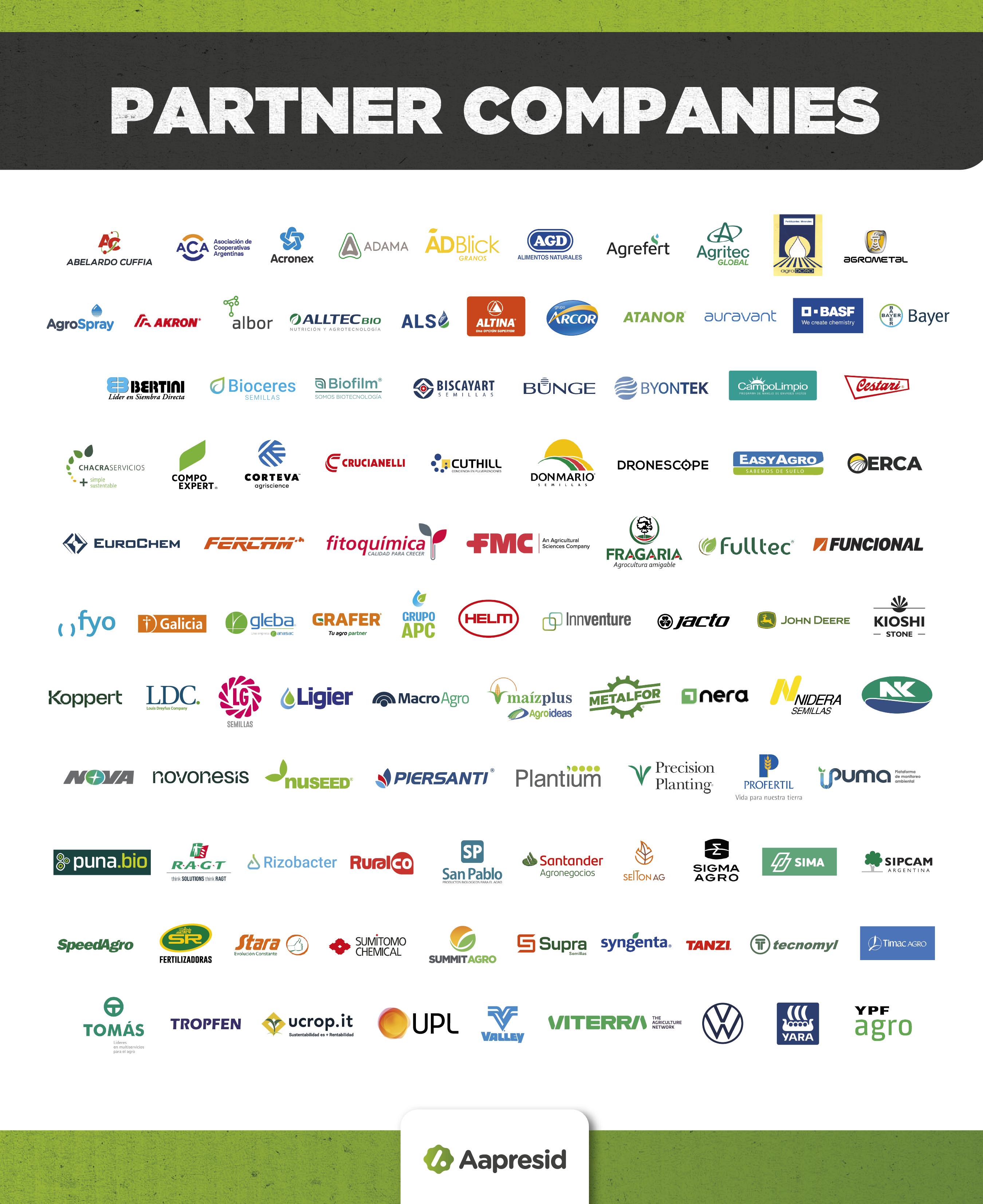

Climate change challenges agricultural productivity and sustainability. Science seeks solutions to ensure food security, ranging from genetic improvement to carbon capture.

By Hugo Permingeat Technological Prospective Committee of Aapresid

The scientific community has been warning about the consequences of climate change for years. Agriculture is particularly vulnerable to these transformations, which impact directly on the profitability and sustainability of productive systems. It is expected that climate change increases biotic and abiotic stress upon crops. Biotic stress, pest control, and diseases face rising issues due to the pressure of diminishing the use of chemical products and their environmental impact. On the other hand, abiotic factors such as drought, extreme temperatures, and soil salinization affect soil fertility and limit crop yields, hence requiring an integral approach (Palmgren & Shabala, 2024).
The authors described several critical situations worthy of consideration:
A- Global warming disrupts precipitation patterns, increasing the frequency and severity of extreme climatic events. Meteorological events that once occurred every 100 years may be recorded every 30 years by 2040. Currently, 40% of the Earth’s surface is classified as dry land, with 70 countries experiencing frequent droughts and agricultural losses exceeding USD 80 billion annually. On average, a sevenday drought reduces basic crop yields by 3% to 8%, and these losses are expected to surpass 50% by 2050.
The future outlook does not seem encouraging. Since the 1970s, the frequency and intensity of droughts and heat waves have increased, a trend expected to continue in upcoming decades. Hotter days lead to higher soil evaporation, arid land expansion, and greater irrigation dependency. Over the past 100 years, water consumption in agriculture has nearly sextupled, exceeding 1.9 billion m³ by 2000. In Australia, less than 1% of irrigated land accounts for one-quarter of total agricultural value; whereas in Pakistan and India irrigation covers 70% and 40% of cultivated land, respectively.
Irrigation not only helps mitigate drought but also maintains leaves’ optimum temperature within the ideal 'thermal window' for crops.
While C3 species, such as wheat, rice, and soybean, thrive better under temperatures close to 23°C, C4 species, like corn, perform optimally at approximately 32°C. In this context, irrigation will be increasingly necessary to prevent productivity losses. However, its intensive use carries the risk of soil salinization. Only 0.76% of underground biologically available water is suitable for irrigation, consequently reliance on brackish water. In more affected regions, the electrical conductivity of irrigation water is rising, adding between 3 and 6 tons of salt per hectare annually and leaving many lands unproductive. Reversing this situation requires decades of withdrawing salinized lands from production or resorting to halophyte species for phytoremediation (Palmgren & Shabala, 2024).
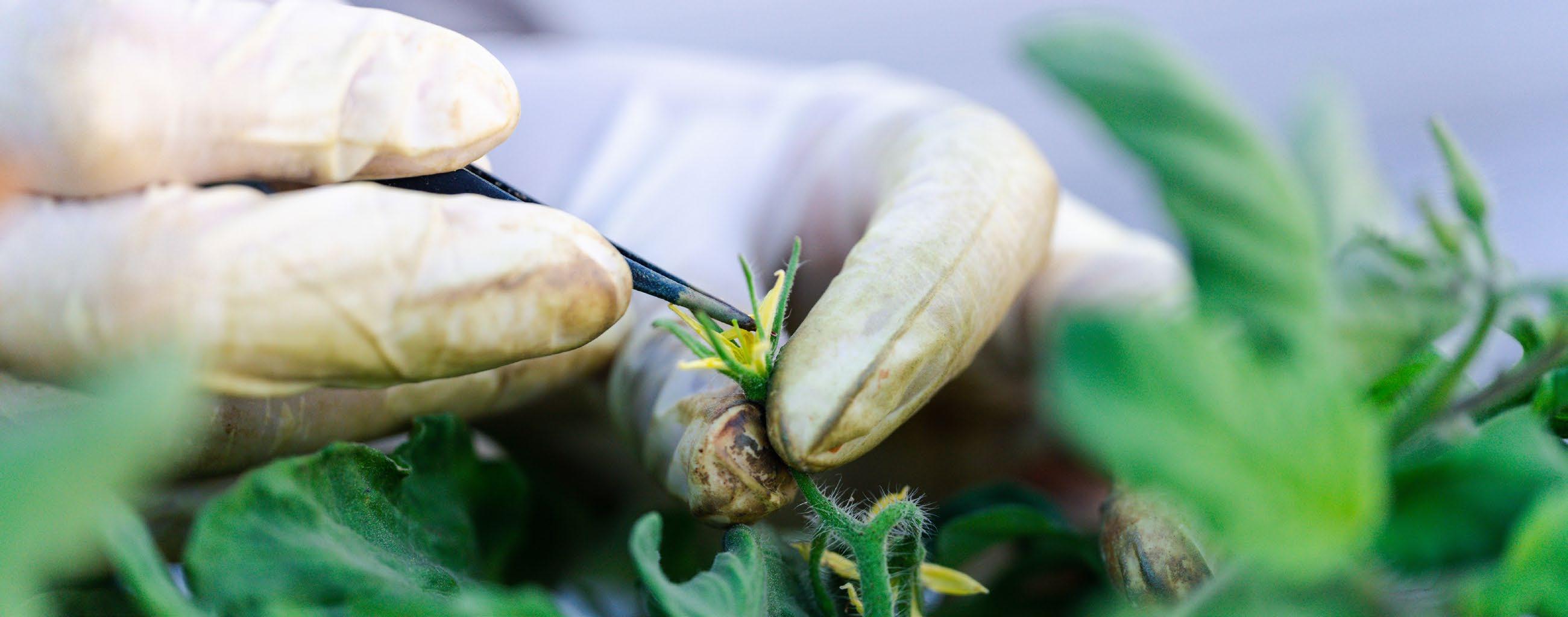

"irrigation will be increasingly necessary to prevent productivity losses. However, its intensive use carries the risk of soil salinization."
Given these challenges, genetic improvement emerges as a crucial element in developing crops adapted to new environmental conditions. Thus, advancing the development of varieties resistant or tolerant to abiotic stress factors, such as salinity, draught, and hypoxia, is essential. These factors are highly complex both physiologically and genetically; however, science has accomplished significant progress in understanding the metabolic aspects involved.
These improvements can be attained through two approaches: reintroducing the gene 'package' into modern crops, using either conventional genetics or genetic engineering, or advancing 'de novo' domestication to obtain higher yields from already tolerant crops and/or wild plants.
Another path toward mitigating the effects of climate change is atmospheric carbon capture. Hoyos-Flight & Tait (2025) focus on two key methodologies: carbon capture and storage, which involves capturing emitted CO2, compressing it, and securely storing it underground; and carbon capture and utilization (CCU), which uses biotechnology to reuse captured CO2 in a circular bioeconomy. Capturing and storing CO2 is transforming industries by turning carbon dioxide into useful products through biological and chemical processes. Companies in the fields of food, fuel, and pharmaceutical materials and products are incorporating these technologies into their business models, reducing dependence on fossil fuels and diminishing emissions by temporarily storing CO2 within open or closed circuits in a circular bioeconomy.
Although CO2 capture and storage is increasingly attracting interest, the permanent elimination of atmospheric carbon dioxide has received greater attention and funding in climate policies. In 2023, governmental support for these technologies reached its highest point, with the EU and the United Kingdom prioritizing their implementation to achieve net zero emissions. However, this trend could limit the development of business models based on CO2 capture and storage, thereby impacting bioeconomy growth and its potential to contribute to environmental sustainability (Hoyos-Flight & Tait, 2025).
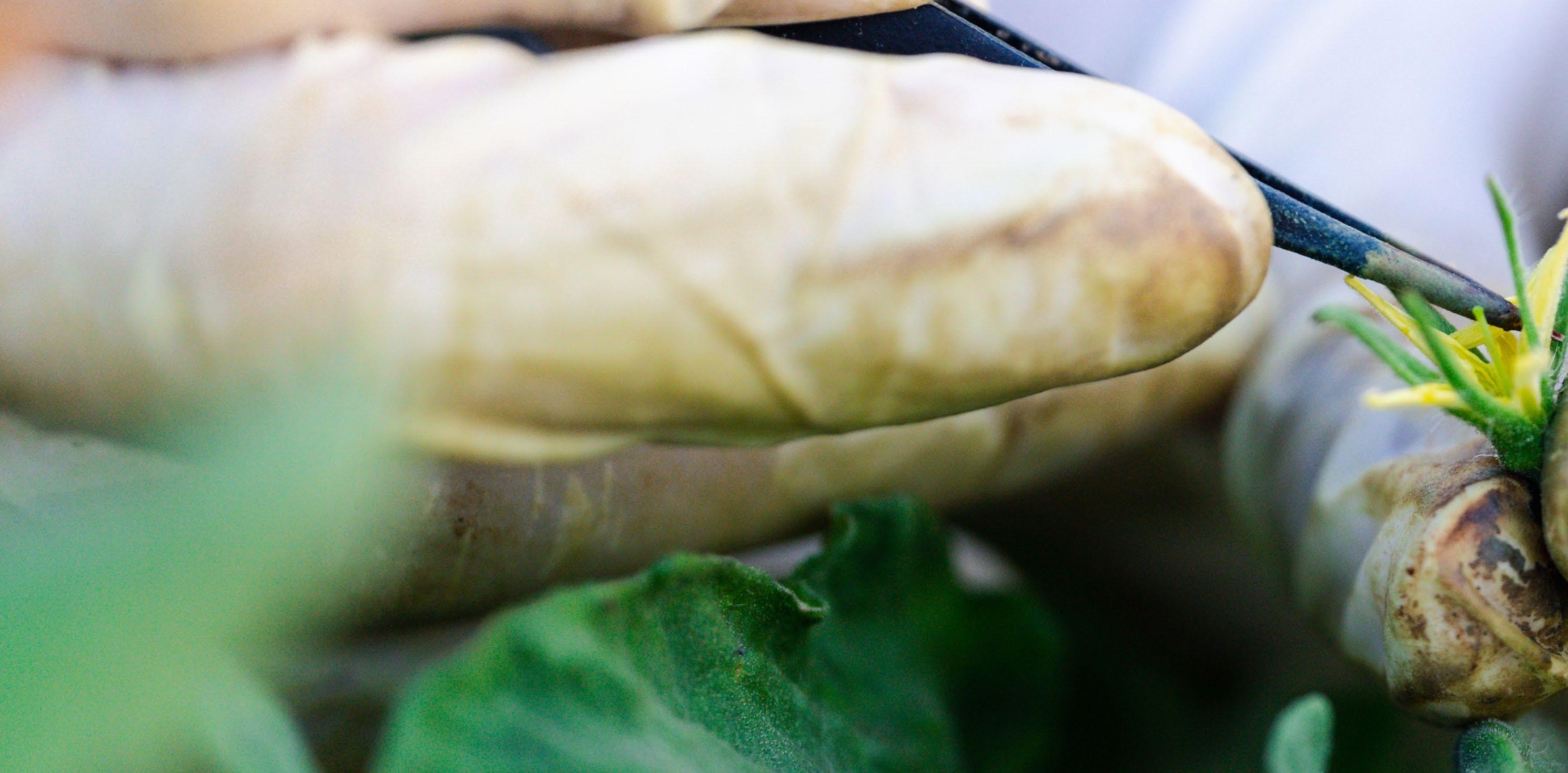
The impact of climate change on agriculture is undeniable and demands immediate, multidisciplinary responses. Crop adaptation, sustainable resource management, and the adoption of new technologies will be crucial in
addressing these challenges. As global warming progresses, it is essential to implement strategies that balance productivity with environmental conservation, ensuring the viability of agricultural production in the decades ahead.
REFERENCES
Consulte las referencias ingresando a www.aapresid.org.ar/blog/revista-aapresid-n-239

A general overview of the impact of this historic agreement, reached after 25 years of negotiations, on Argentina’s productive sector and its international inclusion strategy.
The agreement was reached on December 6th, 2024, in Montevideo, Uruguay, between the political authorities of Mercosur and the European Commission. It marked the closure of negotiations after 25 years of discussion, presenting a historic opportunity for economic, technological, and
By Eng. Marcelo Regúnaga General Coordinator of the Group of Producing Countries of the Southern Cone
political integration between Europe and Latin America. Within the current global geopolitical context, this progress becomes especially relevant, as it also entails moving away from alliance initiatives with countries that do not share our democratic values and principles, as outlined a few years ago.
The Agreement is built upon three pillars: commerce, political dialogue, and cooperation. All three aspects are important when analyzed as part of a new long-term development strategy for
functioning as an effective free-trade zone, which has not progressed in the past decades. In the 90s, the bloc was intended as a possible economic and trade platform for the international inclusion of its members. However, little progress was made due to various circumstances, which is why this element should also be included in the new internationalization agenda, in order to improve the country's competitiveness.
The process initiated in Montevideo must comply with several phases before the signing. Texts in the agreement are currently under legal review and will be translated to the official languages of both parties. Afterwards, the countries have to submit them to their domestic validation and ratification procedures. It is important to bear in mind that the trade agreement can be applied bilaterally with the signature of two or more specific parties, meaning that it can be enforced once signed by the EU's Parliament and one of the member countries of the Mercosur¹. Contrary to the 2019 announcement, which represented a 'political agreement' with the main elements pending negotiation, the decision in Montevideo marks the completion of the process, consolidating the final commitments between the two blocs.
Implementing the agreement will integrate two regions, jointly summing up 800 million consumers and accounting for more than 24% of
"In the current global context, dominated by political and commercial tensions, along with challenges to the multilateral system."
global GDP. The goal is to consolidate a strategic political and economic association by opening new trade opportunities and strengthening bi-regional cooperation. In the current global context, dominated by political and commercial tensions, along with challenges to the multilateral system—posing serious threats for low-economic-power countries, such as Argentina—this alliance sends a clear message in favor of commerce based on transparent rules, reinforcing the essential role of both blocs in defending multilateralism.
Several uncertainties arise from growing protectionism and the weakening of multilateral trade. Clear access rules to one of our main export markets of high unit value products are key to avoiding risks caused by the possible emergence of discriminatory or protectionist measures. In the past decade, although agroindustrial exports from Argentina to the European Union have lost market share to Asian countries and other
"This alliance sends a clear message in favor of commerce based on transparent rules."
¹
emerging regions, Europe remains an important destination for quality meats and other high-value agroindustrial goods, which are vital to several regional economies. Moreover, in the medium and long term, this alliance can boost the development of integrated value chains between Argentine and European companies for the production and export of bioproducts, as well as in other strategic goods and services.
The strategic importance of the agreement is not limited to trade in agroindustrial products with Europe, where protectionist lobbying from farmers in some European countries² is expected to continue. In addition, the dynamic aspects of Argentina’s long-term development process and modernization should be considered. The country has faced decades of isolation, leaving much of its productive structure globally uncompetitive; hence, the agreement could encourage longterm investments in key sectors. Additionally, by considering a gradual opening with extended transition periods for the most vulnerable sectors, it complements the economic reforms underway in Argentina, for which international inclusion will play a significant role.
By the end of the process, the agreement foresees notable tariff reductions: 91% of Mercosur and 92% of the EU imports will be duty-exempt once transition periods are completed. Moreover, non-duty barriers will be reduced, and legislation will be aligned in crucial areas such as technical barriers, health and plant protection measures, and public tenders. For the agricultural sector, the EU will entirely eliminate duties affecting 89% of Argentine imports, while the rest will be covered through installments or partial tariff preferences.
Price reductions, although quantitatively limited for a few vulnerable EU products, will improve selling prices of some commodities and, above all, of high unit value products such as fish, fruits, wines, honey, and other products, as well as reductions in in-quota tariffs on meat. Hence, they represent an opportunity for multiple regional economies, whose products will enter the market in desirable conditions, similar to those of our competitors, from the start of the agreement or following short transition periods.
² It must be noted that in France, Poland, and other EU countries, growers and some politicians are already advocating for the European Parliament to reject the Treaty.
The main scope of the agreement include:
0% duties upon entry into force for flour, soybeans, industrial oil, meat offal, a few fishing products (hake, squid, scallop), dried fruits, legumes, peanuts, brews, spices, drinks, and other agroindustrial products.
Tariff reduction over 4-10 years for prawns, canned fish, citrus fruits, berries, corn flour, starch, vegetable oils, biodiesel, food preparations, jam, candies or snacks, preserved vegetables, ice creams, and pet food.
New export quotas granted by the EU to the whole Mercosur include 99,000 tons of bovine meat; 180,000 tons of poultry meat; one million tons of corn; and 650,000 tons of ethanol. Additionally, the in-quota duty of 20% is eliminated for Hilton quota—29,500 tons of bovine meat in the case of Argentina.
Regarding wines, duties are eliminated, and 140 Argentine geographical indications are recognized, along with traditional expressions such as 'reserva' or 'gran reserva' and regulations on labels, bottling, and sugar content.
Concerning citrus fruits, the EU will, for the first time, eliminate the entry price system for certain citrus fruits from a single commercial member.
The agreement will contribute to the reorganization of value chains between both regions in the medium or long term, optimizing the utilization of comparative and competitive advantages. As a result, modern society will be able to face new challenges and advance toward the development of a sustainable bioeconomy, with high incomes for the inhabitants of the two blocs. The abundant
natural resources and biodiversity in Argentina and Mercosur, in addition to their business capacity in producing food, bioproducts, and other assets and environmental services, reinforce the idea of strategic integration and clear complementarity between both regions. Furthermore, the alliance would facilitate the transition from a fossil economy—characterizing the current global


productive system—toward a more biological economic model, proposed in several international forums and supported by significant investments and international finance programs.
Achieving positive results will be possible by deepening the public-private dialogue between both blocs and addressing pending matters, particularly on the productive and environmental agenda. The agreement could become a vital tool to intensify cooperation and improve mutual understanding of productive systems and their implications. Thus, collaboration among scientists, farmers, and regulators emerges as a more effective strategy than imposing unilateral trade barriers lacking scientific support. Through bi-regional dialogue, the agreement has the potential to include external perspectives and realities within European regulations, promoting a more balanced and sustainable commerce.





Biochar is obtained through different types of plant-based biomass. Plants capture carbon from the atmosphere through photosynthesis. By transforming biomass into biochar, carbon can be stored for many years, preventing it from returning to the atmosphere and helping to reduce the amount of carbon dioxide in the air.
Among the mitigation methods, the Intergovernmental Panel on Climate Change (IPCC) proposes a charcoal-rich material known as biochar.
Pyrolysis is a very ancient and mature technology employed in the production of biochar. The process consists of heating organic substances under relatively high temperatures in the absence of oxygen, generating chemical transformations without producing common combustion reactions. As a result of these thermochemical reactions, gaseous products (synthesis gas), liquids (pyrolysis oil), and solids (biochar) are obtained. Gaseous and liquid products are essentially used for energy purposes, while solids are intended for agricultural and industrial use.
Pyrolytic processes have been known for a very long time and consist of heating raw material in special non-oxygenated ovens at temperatures often exceeding 500°C, depending on the input and the desired type of product. These conditions prevent combustion and avoid CO2 from returning to the atmosphere, giving rise to biochar. This solid substance is composed of molecules with a very 'tight' structure, making it resistant to natural degradation caused by microorganisms, as well as liquids and flammable gases of different composition, depending on the input and the process employed.
El biochar | Fuente: https://biochar-us.org/


It has been demonstrated that incorporating natural or synthetic sources of N and P into biochar enables greater nutrient availability. Therefore, it is being mixed with manure, humus, and conventional fertilizers in studies and commercial products.
Moreover, some works propose incorporating biochar into ruminant diets to reduce enteric methane production—a line of research advancing in the United States, Australia, and New Zealand.
Beyond the farming sector, biochar is utilized for soil remediation in contaminated mining areas, fuel spills, water filtration, chloride removal, and more. In the construction sector, it can be incorporated as an inert material in cement or as a component in steel to help decrease the environmental footprint. In addition, adding biochar enhances the properties of many materials. Several large industries have already established developing initiatives for this purpose, including in Argentina.
Biochar use and production has been increasing significantly worldwide since 2020. Major interested parties are agricultural producers, the forest industry, horticulture, among others. North America and Europe are the leading regions in
its development, although the rest of the world is also making progress. South America is significantly overshadowed; nevertheless, there are proposals and ongoing developments in Brazil, Chile, Colombia, and Ecuador.
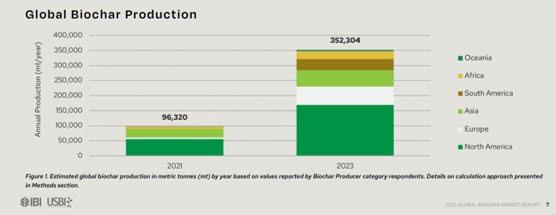
Source: Market Reports https://biochar-us.org/
Where are we going
According to recent studies, Argentina has significant potential to reduce carbon emissions through biochar, owing to the positive balance between the country’s high production of residual biomass and relatively low total emissions. However, local projects remain limited and lack solid connections among interested parties.


The path toward regulations is nearly outlined. Globally, several public-private initiatives are already promoting biochar production and usage, such as the International Biochar Initiative (IBI), the United States Biochar Initiative (USBI), the European Biochar Industry Consortium (EBI), and the Latin American Biochar Institute (ILBI in Spanish). Other regions of the world, including the Far East, are currently in the process of organizing similar efforts.

Inspired by ongoing actions in other parts of the world, we decided to leverage the country’s comparative advantages to generate an 'ecosystem' capable of promoting the development and adoption of biochar consistently and efficiently. The goal is to boost Argentine integration into the global market, seeking better economic performance in projects involving environment protection.

To reach this goal, we encourage the creation of contact networks, information exchange, training and education, and the promotion of public policies favoring these developments. We have already established contact with the abovementioned international initiatives in order to generate collaborative alliances. Learning from other regions’ experiences will help us achieve faster and more consistent growth.
The Biochar Argentina initiative is collaborative, open, and charge-free, already supported by important public institutions, business associations, companies, and farmers. Aapresid supports us significantly and has been a key actor, particularly in the organization of the virtual meeting "Biochar in Argentina: a path to be traced", held last November with almost 500 enrolled people.

The production and use of biochar in Argentina could serve as a powerful tool for the country’s federal development. Given that transporting non-processed biomass is highly expensive due to its lack of economic value, biochar production should be conducted on biomass-producing sites. Consequently, this would help reduce transportation emissions, protect roads, reverse the urbanization phenomenon on the outskirts of big cities, and promote the creation of higher-quality green jobs in rural areas. This industry can foster stronger cross-sector collaboration and integration between rural areas and the industrial sector, bringing both the natural and the manufactured ecosystems closer together.
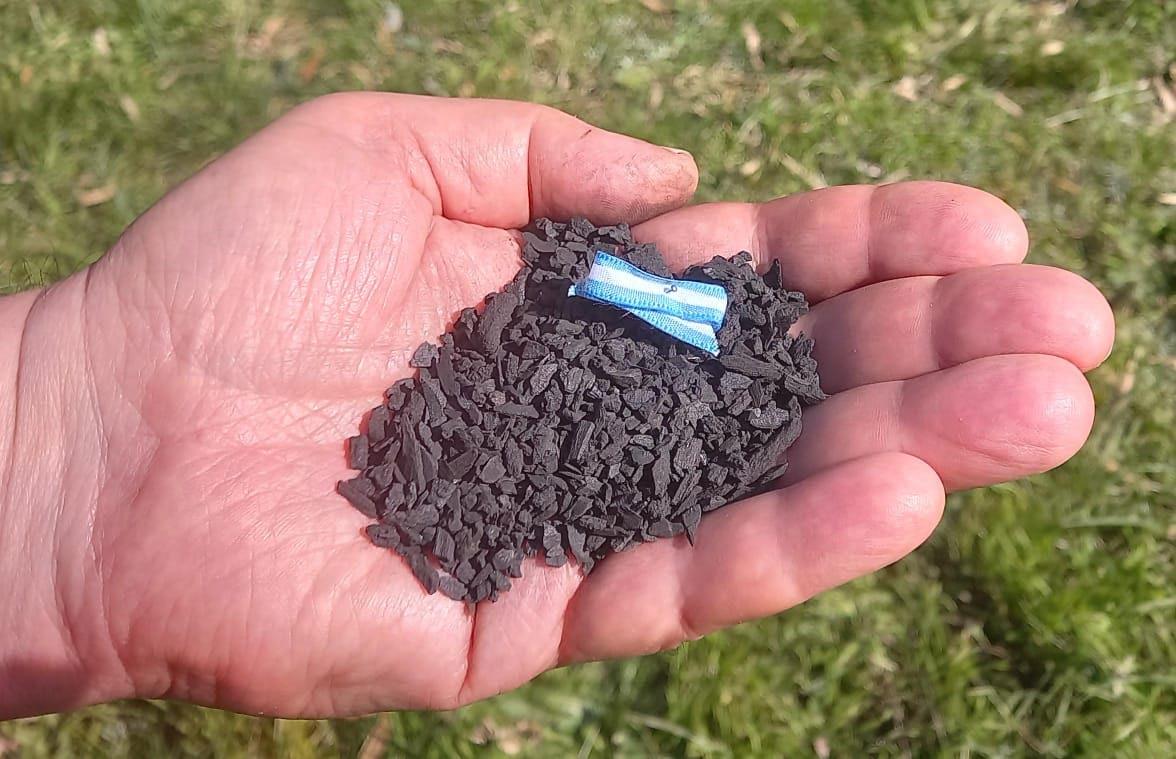
Anaerobic nitrogen mineralization is crucial for assessing soil health. Simple, affordable, and efficient —this article delves into the ABCs of its use.
Most soils affected by human intervention face health-related issues. Pristine soils are deemed healthy, exhibiting a great adaptive capacity to environmental changes and maintaining
By: Gisela V. García¹,²,* (PL CIAFBA— Bs As School of Agriculture and Forestry Engineering—3139), Nahuel
I. Reussi Calvo1,3 (PL CIAFBA 1008), Nicolás Wyngaard¹,³, Guillermo A. Studdert1 (PL CIAFBA 3035)
¹ Faculty of Agricultural Sciences, Argentine University of Mar del Plata, Balcarce Integrated Unit.
² Commission for Scientific Research of Buenos Aires Province.
³ CONICET
* gisela_garcia@mdp.edu.ar
functionality under disturbances. Unsustainable management practices in agriculture have contributed to organic carbon content loss and other degradation issues, consequently affecting the soil’s capacity to function optimally.
Historically known for its highly productive soils, the Argentine Pampas region has experienced declines in total organic carbon content, labile fraction, particulate organic carbon, and aggregates stability. Such changes increase soils’ susceptibility to further forms of degradation, such as erosion, which represents a challenge for sustainable agriculture, food security, the provision of ecosystem services, and the economy
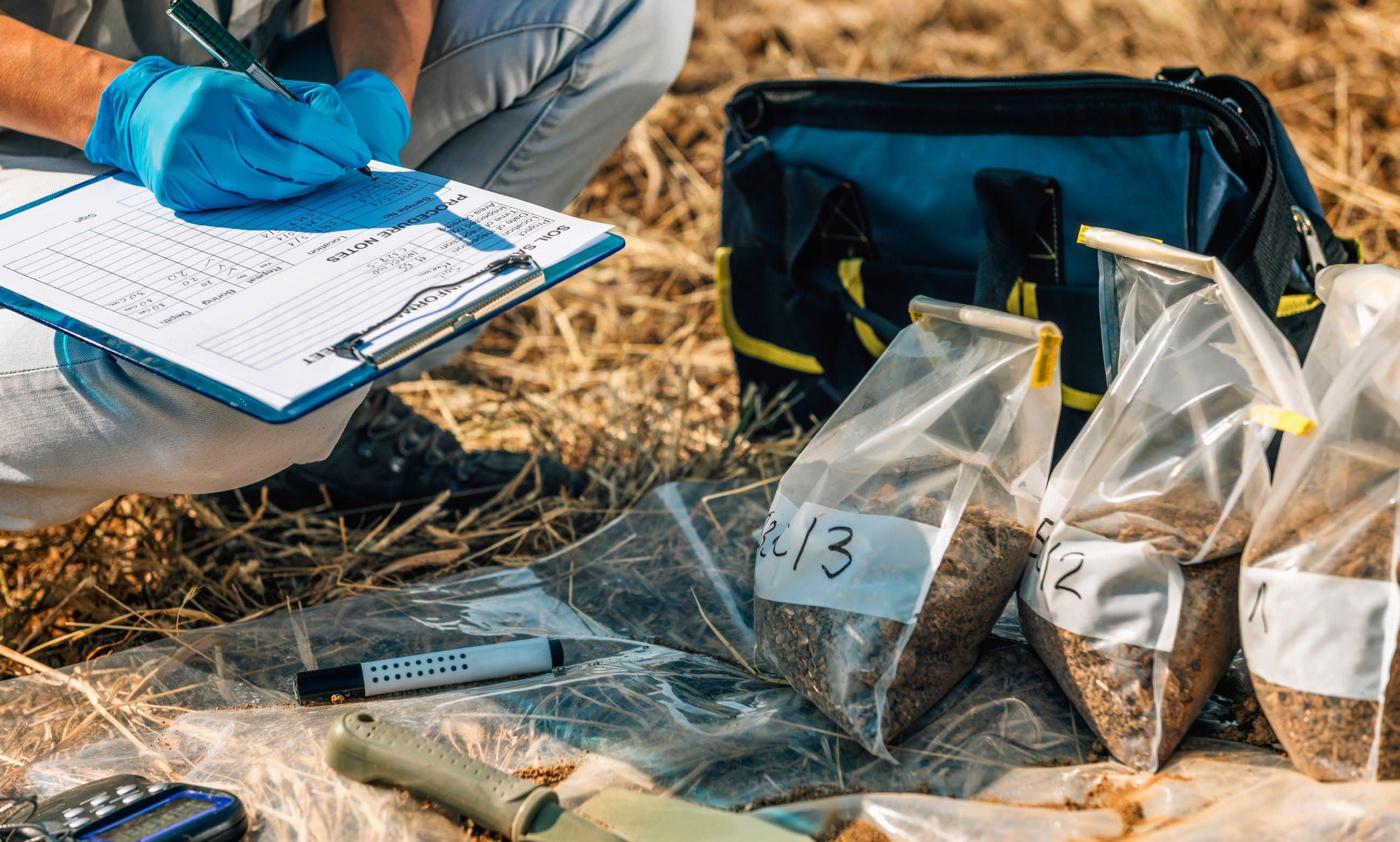
Once in the laboratory, the sample is prepared, and nitrogen is quantified as mineralized ammonium during a seven-day anaerobic incubation at 40°C (Figure 1). AN determination is straightforward, rapid, economical, safe for the operator, and easy for laboratories to implement, requiring minimal equipment and reagents.
Many laboratories in the Pampas region have long provided this service due to its demand as a tool for nitrogen fertility and crop fertilization. Currently, laboratories in other regions of the
country have expressed interest in utilizing this determination, which will expand its application. AN mineralization results are expressed in ppm or mg/kg—mg of AN per kg of soil.
"AN determination is straightforward, rapid, economical, safe for the operator, and easy for laboratories to implement, requiring minimal equipment and reagents. "

The numeric value provided by the laboratory as the result of AN determination should be interpreted to infer the soil’s functional ability. To better interpret AN as an edaphic health indicator, it is advisable to document data obtained from the sampling areas, including soil use, management practices—such as crop sequences and fertilization—and productivity, such as yields. These data are useful as complementary information.
"To better interpret AN as an edaphic health indicator, it is advisable to document data obtained from the sampling areas, including soil use, management practices—such as crop sequences and fertilization— and productivity, such as yields."
Determining whether the soil has lost health compared to its original state requires an analysis of the AN value for the agricultural situation against the reference value (pseudo-pristine); the latter represents the greatest health state the soil can achieve. AN is sensitive to changes in soil use, showing declines when shifting from nondisturbed states to agricultural ones. Comparing both values facilitates assessing the degree of soil health loss: the closer the AN value is to the referential agricultural situation, the healthier the soil will be.
To monitor the effects of management practices on soil health over time, the AN value obtained in the agricultural situation should be compared with measurements from previous years within the same area. Therefore, a sampling frequency of 1 to 3 years is advisable, depending on the employed practices. While AN is sensitive to the effects of agricultural practices, it does not reflect seasonal changes—among fall, winter, and spring—nor respond to short-term effects that do not disrupt soil health, such as the quantity and quality of residues from predecessor crops like wheat, soybean, or corn. Thus, an increase in
AN level indicates that management practices are positively affecting soil health, whereas a decrease denotes the contrary.
Furthermore, changes in AN values signal variations in other edaphic health-related properties that are not normally monitored (Figure 2). AN is positively and closely related to total organic carbon, including its labile fractions, such as particulate organic carbon, hot-water extractable carbon, and potassium permanganate oxidizable carbon—or active carbon. In addition, AN is linked to nitrogen and sulfur potentially mineralized, aggregate stability, microbial respiration, and the abundance and activity of arbuscular mycorrhizal fungi. Thus, an increase in the soil’s AN value indicates improvements in all these edaphic properties, which represent the soil's biochemical, physical, and microbiological health.
Several models have been developed to predict particulate and total organic carbon (Figure 3), as well as aggregate stability (Figure 4) at 0-20 cm depth based on AN. With a simple and economical measurement, it is possible to infer the state of other soil variables without directly measuring them, facilitating an early and preliminary diagnosis of soil health. If necessary, specific analytical determinations can be conducted to obtain a precise diagnosis.
"An increase in the soil’s AN value indicates improvements in all these edaphic properties, which represent the soil's biochemical, physical, and microbiological health."

Figure 2. Edaphic properties defining both crop nutrition and the soil's biochemical, physical, and microbiological health are related to anaerobic nitrogen mineralization.
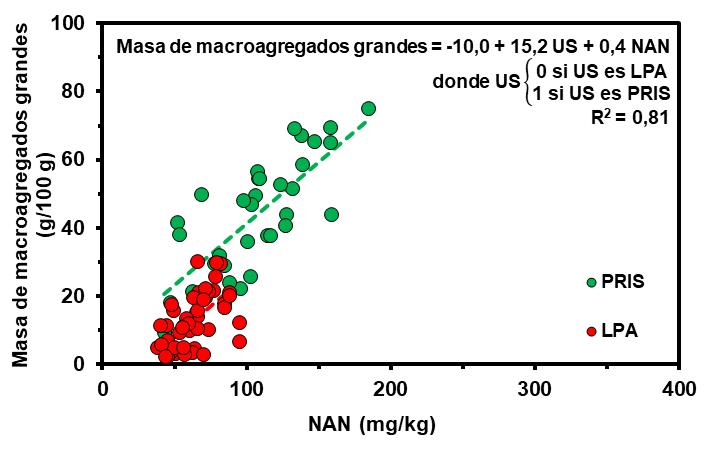
Figure 4. AN-based mass of large macroaggregates (indicator of aggregates stability) for two soil uses (US)— agricultural production plots (LPA) and pseudo-pristine (PRIS)—measured at a depth of 0-20 cm in mollisol soils from Central-southeastern Buenos Aires.
All this complements the most well-known attribute of AN: its use as a support tool for diagnosing nitrogen fertility and crop fertilization due to its close and positive relationship with potentially mineralizable nitrogen. Thus, the higher the AN value, the greater the quantity of organic nitrogen that can be mineralized during a crop cycle. Under optimal conditions, this translates to higher grain yields in crops like corn, wheat, barley, and sunflower.
There are close relationships between AN and aspects such as grain yield (Figure 5a), aerial biomass, nitrogen fertilization response (Figure
5b), as well as nitrogen and phosphorus content in the plant. Moreover, several models have been developed to predict wheat and corn yields by integrating AN at a depth of 0-20 cm with nitrate nitrogen content at sowing at a depth of 0-60 cm. This enables the determination of the productivity obtained from soil nitrogen supply in the crop and the adjustment of the nitrogen fertilizer dose to achieve a specific yield. Studies suggest that AN may also serve as an indicator of the soil's ability to supply phosphorus and sulfur to plants.

5. AN-based grain yield (a) and nitrogen content in the wheat plant (b) at a depth of 0-20 cm in agricultural production plots in mollisol soils from Central-southeastern Buenos Aires.
In summary, anaerobic nitrogen mineralization is a useful tool for diagnosing soil health. With a single, easy, and economical parameter to measure and interpret, it is possible to understand edaphic health conditions and plan management practices to improve or maintain them. Practices that increase AN not only enhance the soil's biochemical, physical, and microbiological health but also boost crop productivity.
"Practices that increase AN not only enhance the soil's biochemical, physical, and microbiological health but also boost crop productivity."
Acknowledgements:
We are particularly grateful to professional advisors and farmers who collaborated in the search for sampling sites and/or allowed sample collection and testing in their agricultural establishments, contributing to the generation of the information published in this article.

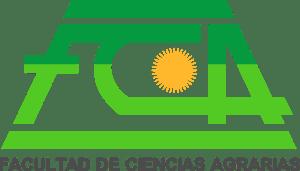
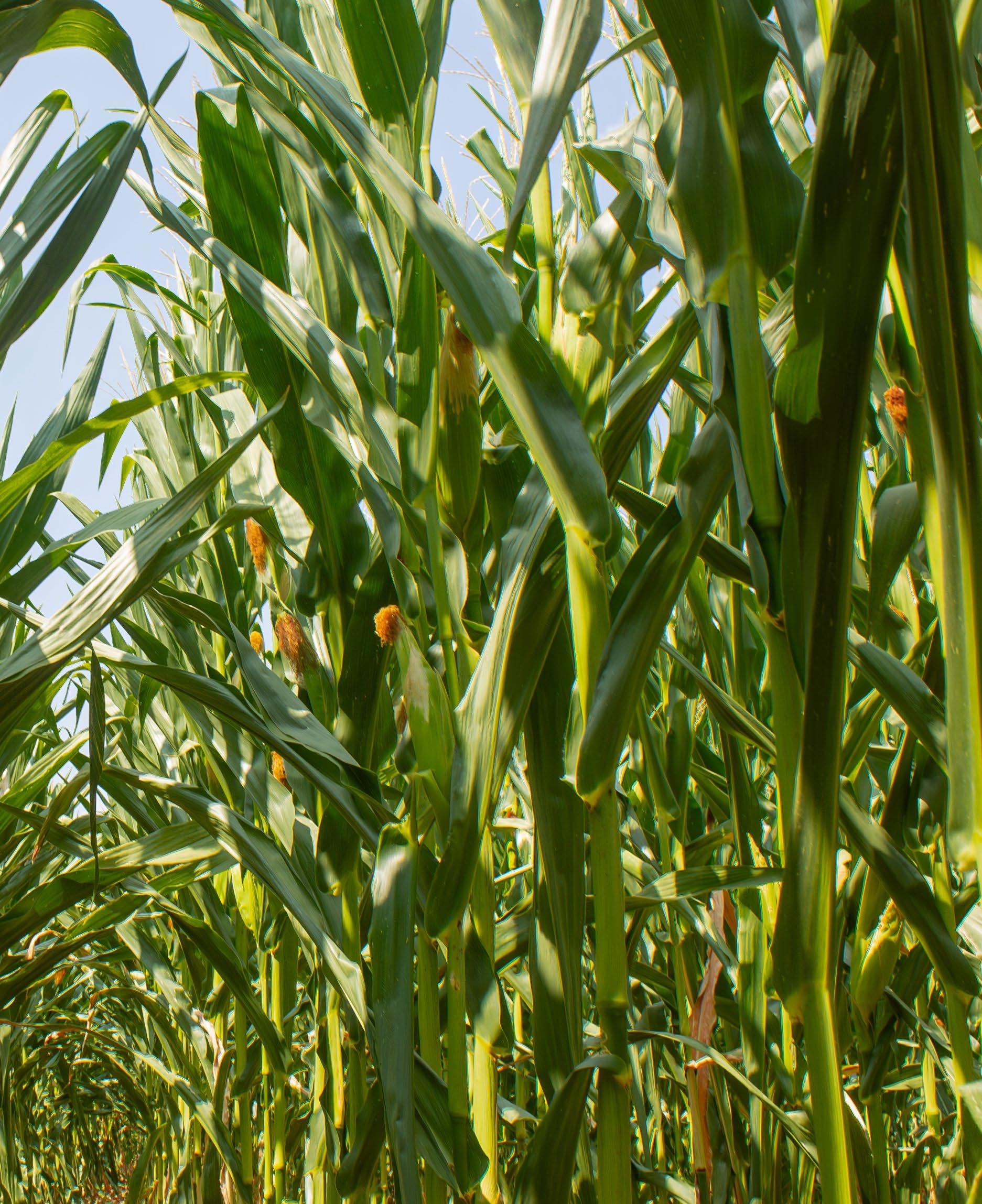
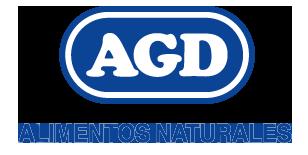


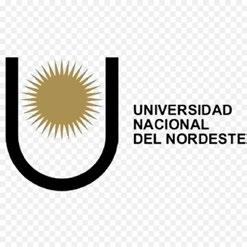
A central aspect of the report is the concept of nitrogen critical thresholds, which indicate necessary minimum levels of N in the soil to reach optimum yield. In NEA, estimations are 150 kg N/ha without considering N supply by mineralization (AN) and 298 kg N/ha when including it.
Nevertheless, yield does not depend just on available N. Factors such as precipitation, temperature, management, and specific conditions in the area are also determinants. Therefore, the
report proposes to adjust critical thresholds depending on three productive sites: yields lower to 6,000 kg/ha; yields between 6,000 and 9,000 kg/ha; and yields above 9,000 kg/ha.
In these scenarios, critical thresholds vary between 138 and 165 kg N/ha taking into consideration only available nitrogen (soil + fertilizer) and between 275 and 311 kg N/ha including AN. As yield potential increases, the critical threshold rises.

To address this question and analyze Argentina’s position regarding the use of agricultural drones, Martín Rainaudo, an Aapresid member and manager at Banburubi, provides his expert insights.
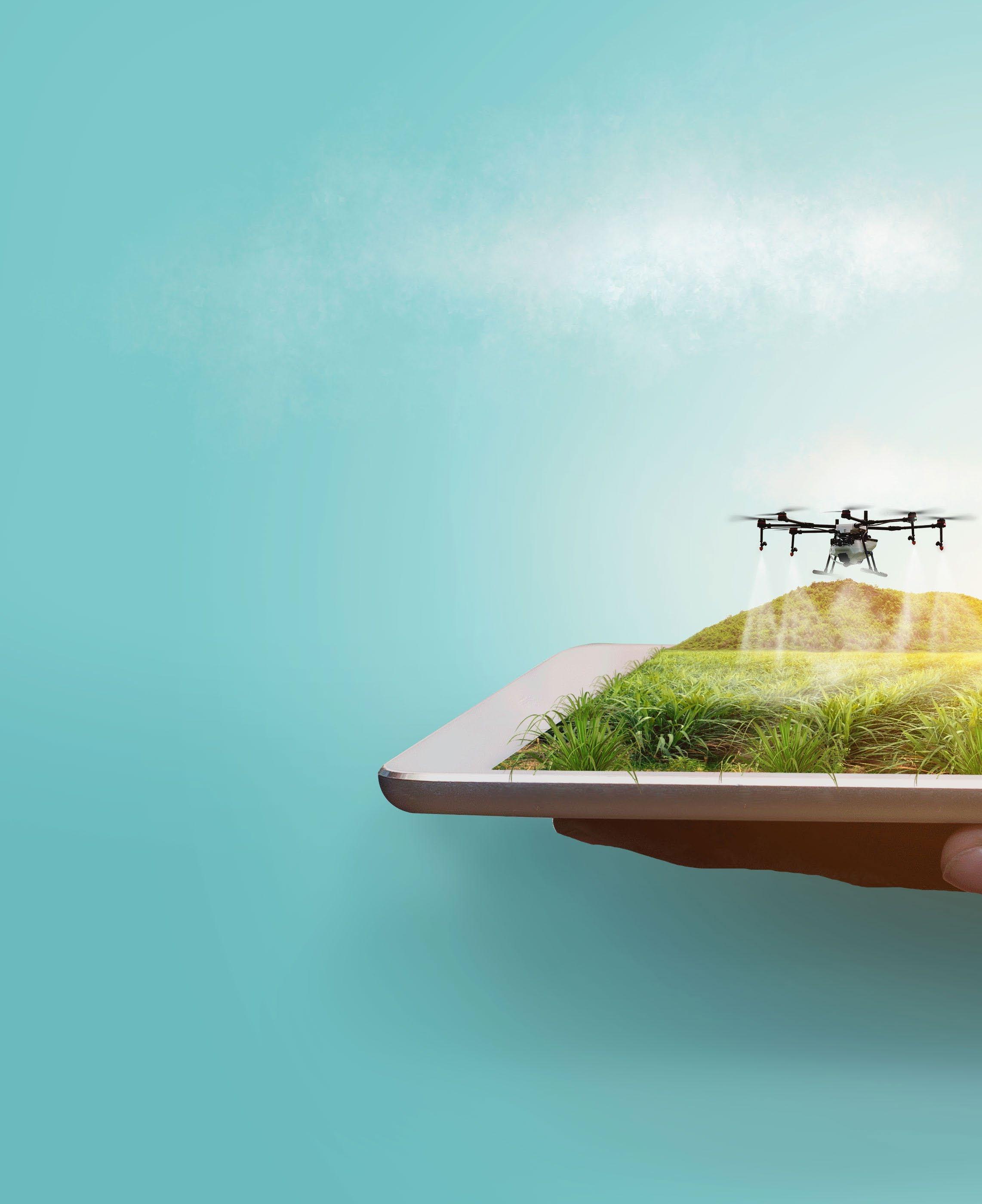
By: Agr. Engr. María
Magnelli
The use of drones in agriculture presents one of the most significant technological advancements in recent years, revolutionizing crop management, nutrition, and protection. With their precision, operational capabilities, load capacity, and versatility, among other features, these unmanned aerial vehicles have become strategic tools in

Argentine agriculture. Today, smart agriculture has paved the road toward more efficient and sustainable management, enabling greater production using fewer resources.
The country has between 1,500 and 2,000 active agricultural drones, with remarkable growth in the number of companies providing this service.
In the city of Pergamino, one of these companies, Banburubi, began its operations in 2020 and has since sprayed around 6,000 hectares by drone. "While these figures might seem low, we prioritize steady and secure progress by remaining cautious and self-critical in our work, aiming to avoid wasting such promising new technology.
Drone operational capabilities improve year after year, with larger tanks and longer-lasting batteries. Thanks to such advancements, we have improved the application average from 5 hectares per hour to 15. Moreover, this allows us to diversify our tasks: initially we focused entirely on seed nurseries and trials; today, owing to technological progress, we are able to undertake more extensive projects," explains Agr. Engr. Martín Rainaudo, manager at Banburubi, farmer, and member of Aapresid.
The use of drones in the field has revolutionized the way agriculture is conducted. In this context, Rainaudo shares his insights on their application in extensive crops, as well as their advantages, challenges, and areas for improvement.
Equipped with GPS, multispectral cameras, sensors, collision avoidance systems, advanced software, and spraying systems, agricultural drones can apply liquid or water-soluble fertilizers with millimetric precision.
The analysis and correlation of various data layers, provided by aerial images, yield maps, soil samples, and green indexes, among others, enable the diagnosis of nutritional deficiencies and the use of algorithms for variable or sitespecific fertilization prescriptions.
Regarding drone operational capabilities, Rainaudo indicates that modern equipment can lift up to 50 kg. "If one has to apply 200 or 300 kg/ha of urea in wheat and corn crops, which is a

The world of drones is filled with a variety of models and sizes, each equipped with specific systems and features, which opens a wide range of possibilities for every type of task. In addition to crop nutrition, the Aapresid member lists other agricultural uses disseminated across the country:
Topographic characterization: aerial images enable live and notably more accurate ground surveys and soil mapping, which are essential tools for precision agriculture or site-specific management.
Weed mapping: creating plot maps with 2 cm pixel resolution is now a reality. Using software—some free and some paid—it is possible to generate application prescription maps for weeds in fallow lands, as well as for post-emergence soybean and corn crops. These maps are uploaded in a terrestrial combine with section cut or even in an application drone. "Do they operate perfectly? Not entirely. Sometimes we see some specific failures, such as nondetection of weed or detection where there are none. Indeed, it is continuously improving, despite the constant back and forth with the developers of these technologies. In the end, they provide great value, saving over 80% of products in a single application. The advantage is that, before applying, one already knows where weeds are mapped and the exact amount of product to prepare," the specialist claims.
Crop monitoring: "Currently, drones are equipped with higher-resolution cameras, enabling a more precise estimation of green indexes than
those obtained by satellite images. Geolocalized data provided by aerial images, alongside the analysis of the information obtained from plots and crops, means a substantial qualitative improvement regarding management," he emphasizes. Thus, they facilitate the following points:
Characterization of space-time variability in the state of crops.
Plant counting to assess sowing and/or emergence quality, which is crucial for crops like corn.
Early detection of pests, diseases, water stress, and nutritional deficiencies.
Prescription maps for variable doses—including sowing, plant protection products, fertilization, and more.
Sowing area: sowing by drone is mostly appealing for species where seed application per hectare ranges from 15 to 25 kg. For instance, vicia, rye, ryegrass, and alfalfa, as well as other species of winter forages, pastures, and cover crops. "Here is where drones become efficient," he claims.
It is also a viable alternative for sowing upon existing crops, regardless of the previous one, which saves time and boosts yields by sowing at proper times and under more optimal conditions. Moreover, in hardly accessible plots for conventional harvesters due to puddles, uneven ground, or woody vegetation, drones are a suitable option for sowing.
Spraying of plant protection products: in addition to an agricultural prescription and a flight plan, drones can perform targeted, more precise, and efficient applications. Therefore, losses and environmental impact are reduced, which represents notable progress toward sustainable agriculture. In addition, drones are advantageous for spraying high or very dense crops.
According to Rainaudo, one drone can spray between 8 and 15 liters of liquid solution per hectare. For values above this range, operating capacity becomes excessively slow for extensive crops compared to terrestrial equipment. Drones’ volume capacity is extremely low; hence, this point must be considered when deciding and blending formulations, as well as when adding adjuvants and water. "Growers need to be highly trained and informed on how to prepare these liquid solutions. In our case, we are trying to generate and share information, aiming for a more responsible application. In alignment with this, in October 2024, Senasa—the Argentine National Service for Agri-Food Health and Quality—established a deadline for plant protection companies to include specific drone application recommendations on the label of the products," he details.

Baits application: an increasingly common problem in the southeast and center-north region of Buenos Aires Province, are slugs and woodlice In these cases, bait doses range from 3 to 4 kg/ ha, which allows for application by drones. "These
Thus far, Martín Rainaudo has mentioned some benefits of using agricultural drones. Here, he outlines a few additional supporting points:
Access to difficult or waterlogged grounds. In uneven, rocky plots with excess water or woody vegetation—for example under livestock activity— terrestrial equipment is unable to access the plot, whereas drones can.
Nighttime working possibilities. Drones autonomously execute flying routes via GPS location, enabling overnight work. This is highly advantageous in summer, when environmental conditions are optimal for applications. Additionally, pests with nocturnal habits, such as caterpillars in soybean, can be accurately controlled.
products are expensive, and a slightly mistaken adjustment causes considerable variations regarding kilograms. Exceeding the application rate by 20% to 40% with this type of product means money," Martín emphasizes.
Reduced crop losses. As the crop remains untouched, losses caused by broken plants are minimized.
Logistics benefits. Drones offer an efficient solution for specific or small-scale tasks. Transporting terrestrial spraying equipment to cover only a few hectares can be highly expensive. Conversely, drones can be easily transported on a pickup truck or trailer, allowing farmers to drive directly to the site.
Reduced costs. Costs related to inputs, personnel, among other factors are lowered.
Real-time access to information.


Limited operational capability (ha/h). Modern drones' operational capacity ranges from 10 to 20 hectares per hour, placing unmanned autonomous vehicles at a disadvantage against terrestrial equipment, which can triple or quadruple this figure.
Loading of batteries and products. Currently, approximately every six to seven minutes, the drone has to return to base for battery replacement and liquid solutions replenishment. The holy grail of drone applications will emerge with the automation of these processes, improving operational capacity and enabling the simultaneous operation of several drones.
Post-sale service. This is an extremely important point and it is worth mentioning that suppliers are
increasingly improving in areas such as knowledge, assistance, and spare parts availability.
Commercialization of secondhand equipment. Drones have a much higher replacement rate compared to terrestrial sprayers. It is advisable to replace the model every two to three years, which is something to consider when venturing into this activity. Currently, the secondhand market remains underdeveloped, and resale values are extremely low or nearly nonexistent, impacting fees over time.
Remote pilot aptitude. Significant progress has been made in training for drone pilots, thanks to the increasing federalization of education for remote pilots through the establishment of new schools.
Application quality is the top priority and requires understanding the combined performance of various parameters and environmental variables. As it was previously mentioned, drones operate with extremely low volume capacity, which is why it is crucial for plant protection companies to incorporate the appropriate doses for these equipment on their product labels.
Last but not least, it is essential to continue generating and disseminating information to minimize errors, maximize resource-use efficiency, and boost crop production within a sustainable framework.
"Agricultural drones can apply liquid or water-soluble fertilizers with millimetric precision."
We sincerely appreciate Martín Rainaudo for his valuable contributions to this article.

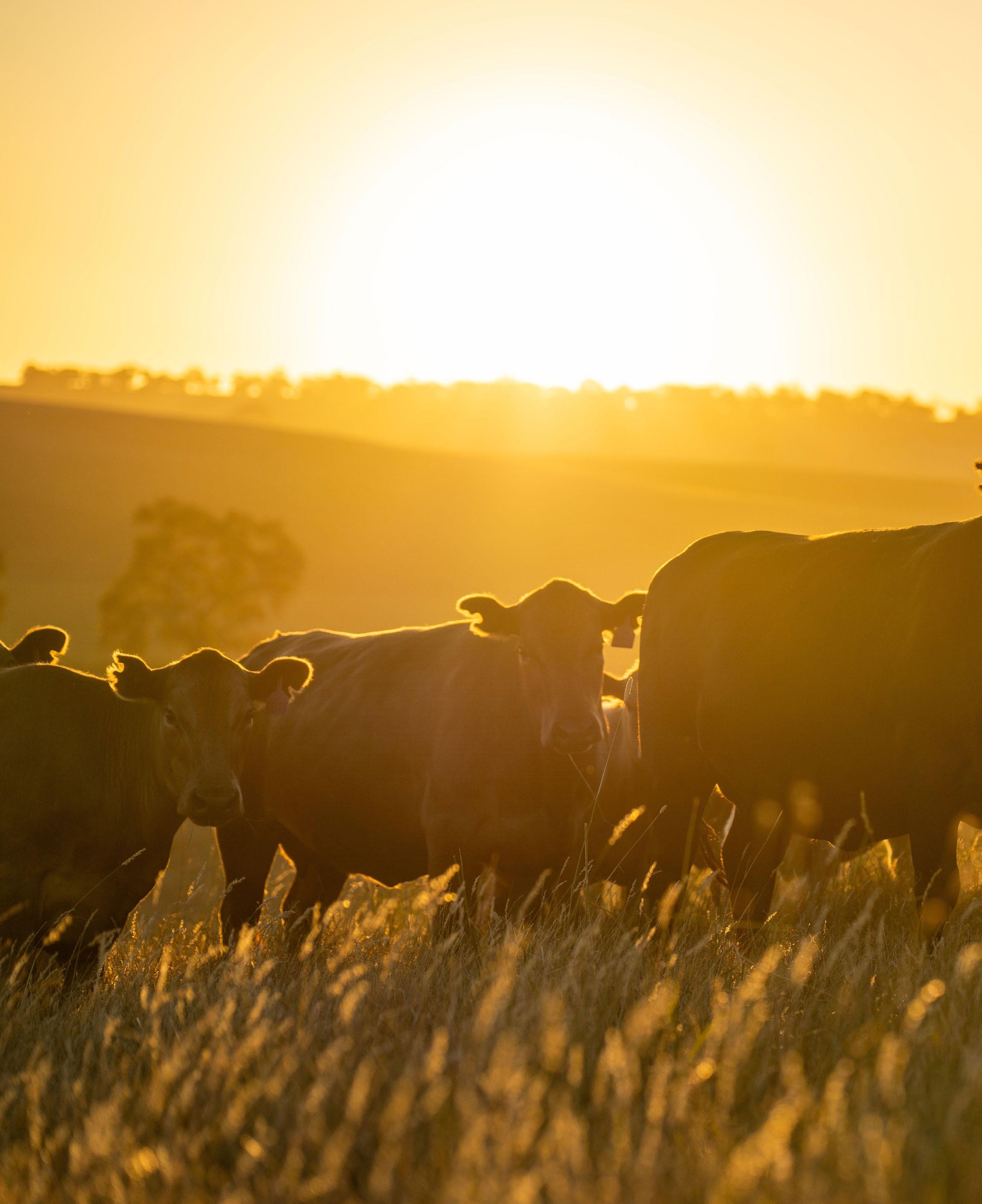
While some people criticize them due to their environmental impact, science keeps proving that, under proper management, these animals can be great allies for soil restoration and conservation.

By: Dr Agr. Engr. José Martín Jáuregui Adjunct professor - Forages Course (FCA - UNL).
1 Stimulation of roots growth: under monitored forage consumption, ruminants stimulate plants to develop denser and deeper roots. These roots release carbon-based substances (exudates), which serve as a source of food for many beneficial microorganisms.
2 Natural and accelerated "fertilization": ruminants’ excrement and urine are a mix of nutrients that plants can rapidly absorb, accelerating nutrients cycling (Image 1).
3 Microbial contributions: excrement contributes with millions of microorganisms originating in the digestive system of the ruminant, increasing the soil's diversity and activity.
4 Controlled animal trampling is an ally: it can favor organic matter incorporation into the soil and break superficial crusts to improve water infiltration. Its benefits will depend on adjusting the animal load to the type of soil and its moisture level.

Image 1. Nutrient recycling in livestock systems (adapted from Noble Institute).
Mycorrhiza: the underground network strengthened by well-managed grazing
One of the most fascinating associations in soil biology is the symbiosis between plant roots and hundreds of beneficial fungi called mycorrhiza
(Image 2). These fungi are part of an extremely thin network extending far beyond the roots, enabling the plant to have access to water and nutrients— particularly phosphorus—which otherwise could not be reached. In exchange, the plant supplies sugars produced during photosynthesis.


This symbiotic association, present in over 80% of terrestrial plant species, is especially relevant in pastures. When grazing is properly managed, several processes favoring the underground network occur:
Compensatory root development: after partial defoliation due to grazing, plants increase root exudation by up to 30%, stimulating germination of mycorrhiza fungi spores and favoring their colonization.
Restructure of root architecture: moderated grazing induces morphological root changes that expand mycorrhizal fungi colonization due to greater branching and larger contact surface.
Underground biodiversity: the world under the protection of grazing
We still know very little about the large living diversity inhabiting the soil, but it is estimated that just a handful of soil can harbor thousands of microorganisms and invertebrate species. Such edaphic biodiversity is essential for the functioning of the ecosystem, and well-managed livestock farming can contribute to its protection and enhancement.
Soil microbial communities respond specifically to grazing patterns. Recent analyses have proven that properly employed rotational grazing systems can increase between 20% and 40% the abundance of nitrogen-fixing bacteria and significantly improve relationships among different microbial functional groups.
Distribution of mycorrhiza propagules: ruminants act as spreading vectors of fungi spores through their feces, increasing the connectivity of the mycorrhizal network in the ecosystem.
Mycorrhizae are vital for pasture productivity. Recent studies have proven that plant communities with good mycorrhizal colonization can produce up to 25% more biomass and present up to 15% more protein content than their lowcolonization counterparts.
Furthermore, fungi contribute to soil carbon sequestration through glomalin production—a stable glycoprotein. Several studies estimate that up to 15% of sequestered carbon in pasture soils can be associated with this substance, which also enhances the soil structure and water retention capacity.
"Recent analyses have proven that properly employed rotational grazing systems can increase between 20% and 40% the abundance of nitrogen-fixing bacteria."
The countryside led him to meet with kings, Nobel laureates, and distinguished figures
Roberto Peiretti is part of Aapresid's pioneers group. He exchanged ideas with leading figures in science and global politics, including Norman Borlaug and King Charles III. However, his greatest pride is the positive impact of no-till farming on agriculture and, particularly, on soils. It was December 2000 when the head of the post office in Cruz Alta spotted a golden-edged letter from the United Kingdom’s Royal Mail and hesitated to deliver it as usual. "I don’t want to send it even through the mailman in case it gets lost. Would you come pick it up?" was heard on the other side of the line by our noteworthy associate for this month’s edition, Roberto Peiretti.
Roberto had no idea what the letter was about either, which made it an even greater surprise when he discovered it was an invitation to deliver a presentation at St James's Palace before Prince Charles—today King of England—in January of the following year.
By Lucía Cuffia
Roberto had participated in a program on sustainable agriculture at the University of Essex, United Kingdom, unaware that it was sponsored by the Royal House. The gathering concluded at the same palace, where, alongside his wife Cintia and his daughter María Marta, he shared a oneon-one moment with the king.
Name: Roberto Atilio Peiretti
Occupation: Agricultural engineer, farmer, and consultant.
Place of birth: Born and raised in Cruz Alta, Córdoba Province. While he mainly resides in Rosario city, he frequently visits his hometown. Apart from farming, he actively participates in events, congresses, and meetings he is invited to, keeping track of them all: "Over the past 25 years, I visited over 30 countries and attended more than 70 events."
Relatives: Married to Cintia Castagnino. Together they have six children: María Belén, María Marta, Agustina, Florencia, Ignacio, and Clara María; and four grandchildren: Renato, Camila, Emma, and Catalina.
Hobbies: Restoring antique motorcycles and riding through mountainous areas. He also greatly enjoys reading, photography, and flying. He is a civil pilot and, even though he not longer flies, every time he steps on a plane, he experiences the takeoff, flight, and landing as if he were the pilot. "It is like riding a bike, you cannot forget it."


This is only one example of the many activities this Aapresid member has been involved in, ranging from groups of farmers and universities to government entities, as well as meetings with figures such as Queen Beatrix of the Netherlands, Prince Guillermo—now king—and his wife Máxima, Dr Norman Bourlag, Nobel Peace laureate in 1970 and ‘Father of the Green Revolution,’ among others. Moreover, Roberto made institutional visits to FAO headquarters in Rome as the president of CAAPAS—the Confederation of American

Associations for the Production of Sustainable Agriculture—and was invited into prestigious academic circles, such as Harvard University, where he had the opportunity to deliver a lecture in Dr. Otto Solbrig's General Agriculture course. "I can say I was a Harvard professor for 45 minutes," he says. Although it is unfair to name only a few, this helps to illustrate the long-standing history of someone who continues to leave his mark.
The problem was enormous: it was necessary to continue producing and increasing volume, while simultaneously stopping and reversing the acceleration of erosion and soil deterioration.
This group of farmers started working spontaneously, with an honest spirit of openness and exchange. "One identified a problem and its origin, another proposed a solution, and someone else found an additional advantage that could be included; it was a dynamic that repeated over and over again, fostered by everyone's cooperation," Roberto says. Nobody kept anything to themselves; there was too much to change. It was necessary to learn how to cultivate without tilling the soil, which simply meant leaving behind the paradigm of tilling and working the land—a practice that has been applied since the beginning of agriculture. In other words, there was a necessity to unlearn in order to start over and develop a new conception of the productive process. As it is often said in the Argentine countryside, a trail had to be forged on very muddy ground.
"It was necessary to learn how to cultivate without tilling the soil, which simply meant leaving behind the paradigm of tilling and working the land—a practice that has been applied since the beginning of agriculture."

One of the many field meetings with Rogelio Fogante.
Roberto conducted the first zero-tillage tests in the south of Córdoba Province, with no-tillage pasture intercropping. The results began to show promise, even though he recognizes that, at the beginning, "the adjustments needed were greater than what was achieved."
The fruit of that exchange became the foundation of what today is Aapresid. "Our common interest led us to find each other, and thus the group began to grow," he recalls. It remained that way until 1989, when the organization was formally established. Shortly after, CAAPAS was formed, originally including Argentina, Chile, Brazil, Paraguay, and Uruguay; it later expanded to other countries in the Americas. Roberto was
part of the founding group of both institutions, he even served as the president of CAAPAS for two consecutive terms. Although he is no longer active in institutional undertakings, the first slide in every one of his presentations features the logo of both institutions: "I take the liberty to feel like a representative; my identity is always Aapresid and CAAPAS."
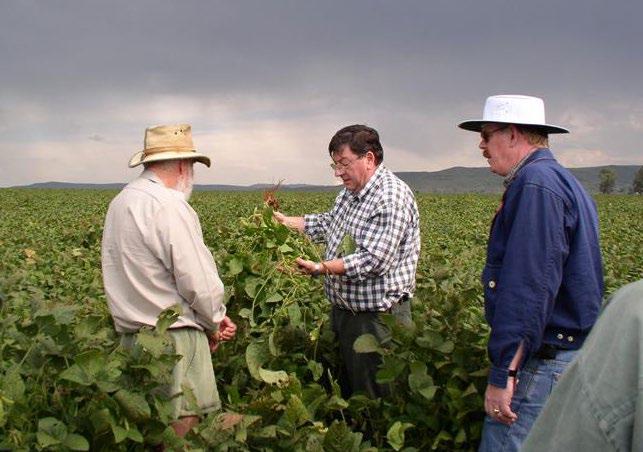
From a garden of vegetables and fruits
Roberto was born and raised in the city of Cruz Alta. In the garden of his childhood home, he grew vegetables and fruits and kept several chickens, rabbits, and dogs that he adopted as pets. Besides going to school and spending hours flying kites, he greatly enjoyed going to the countryside, where he could often be found among the horses, harvesters, and tractors or accompanying those working in the cattle chutes vaccinating the animals.
In 1967, he began studying Agronomy at what is today the Faculty of Agronomy of the University of Córdoba, exactly the year the university opened its doors. In 1971, he obtained his degree with the highest GPA and was awarded the ‘University Award.’ As a result, the British Council offered him a scholarship to study in England and pursue a master's degree and a doctorate in agronomy. However, the condition that, at his return, he had to commit himself to working at the university for twice the time he would spend abroad led him to reject the offer.
"Twelve years of my life with a path already drawn seemed like an eternity to me," he says. Years later, he applied to a public announcement he read in a newspaper and obtained a Fulbright scholarship to study at the University of Oklahoma, where, in 15 months, he obtained his Master's Degree in Science with a focus on Agronomy.
Motorcycles, planes, and a transcendent
Restoring antique motorcycles and riding through the sierras are two passions that define Roberto. The hobby started during his student years in Córdoba, when he bought his first scooter, an Italian Rumi, which became his means of transport throughout his university life. Years later, that same scooter returned to Cruz Alta and was stored in a shed for more than three decades—until one day he rescued it, restored it, and got it running again. Since then, he has restored a couple more motorcycles and now enjoys riding and travelling through Córdoba's sierras.
Nevertheless, his passions are not limited to the ground. Since childhood, flying has been a part of his life. His father, a lawyer and a civil pilot, often took Roberto and his brothers for flights in the aircraft at the flying club. "When I finished college, I attended a course and obtained my license," he says.
Roberto represents the fourth generation of a family devoted to farming activities, continuing the legacy his grandparents had started when they arrived from Italy. Today, with the fifth generation contributing to the work, he remains the agronomist of the group. Although he has delegated many tasks to the next generation, his confidence in the team they have formed is absolute, something he mentions with "much pride and satisfaction."
Beyond all roles, Roberto is still doing what he knows best: observing, learning, sharing, and disseminating knowledge. This vocation has been a constant in his life, leading him to write numerous articles, technical reports, and lecture before a variety of audiences. In recognition of his career, in 2019, the University of Córdoba granted him the title of Doctor Honoris Causa, a distinction that underlines the impact of someone who continues to inspire and ‘forge new trails.’


